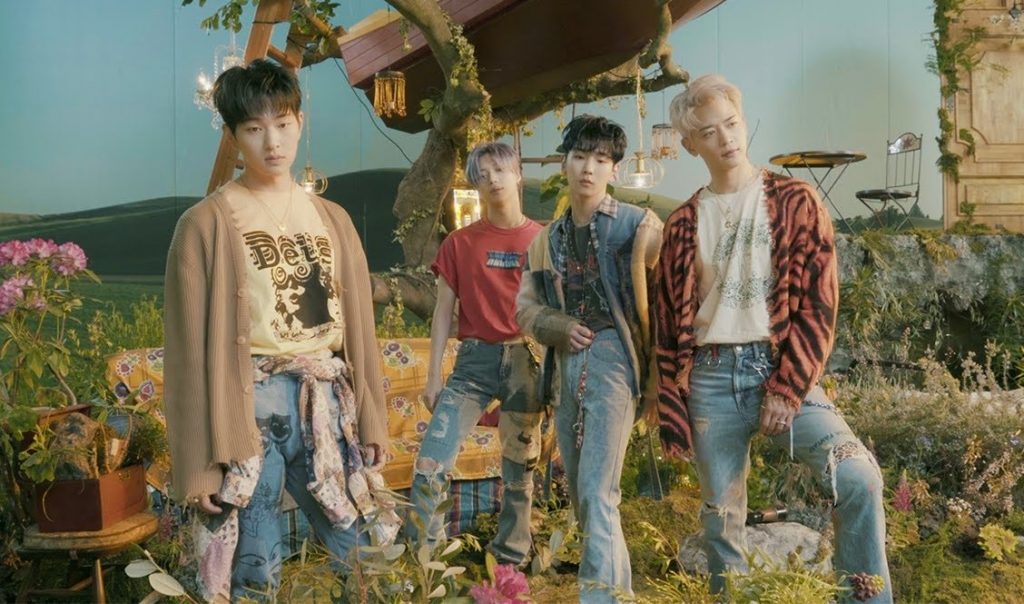Halfway through 2021, and the K-pop scene is already chock-full of new releases, debuts, comebacks, and broken records. At a time when K-pop is without doubt the most talked about music sub-category in the world, new groups are debuting to almost instantaneous success; as evidenced by new acts including ENHYPEN, Aespa, TREASURE, and STAYC.
Despite these tightly time-bound industry trends, 2021 has been an outlier for older groups. Releasing music for the first time in more than three years, groups like SHINee, 2PM, Highlight (formerly BEAST) and Brave Girls have been making a splash on K-pop charts domestically and internationally.
Given the high turnover rates of new acts in the industry, it’s not uncommon for groups to fade into irrelevance within seven years of debut. Monikered the “7-Year Curse” by K-pop industry insiders, several popular artists including Miss A, SISTAR, B.A.P. and most recently, GFRIEND have fallen prey to it.
Older groups from the second generation of K-pop have been making returns following long hiatuses to grand success.
The second generation is loosely used to refer to groups that debuted between mid-2000s to early 2010s; including iconic acts like SNSD, SHINee, BIGBANG, 2PM, etc. They helped shape the definitive K-pop sound as it is known today. One must remember that these groups experienced their prime when Western consumption of K-pop was still largely limited to expat Korean populations and a small percent of foreigners; with their core fanbases consisting of local, Chinese, and Japanese fans alone. This landscape could not be more different today; expanding fanbases, successful releases and international attention for older groups are signifying a cultural shift in how K-pop is consumed. As international (Read: Western) consumption now outweighs domestic fanbases, the reception of groups has also undergone a metamorphosis.
Take SHINee for example. They last released music in 2017 via the three-part album series Story of Light prior to mandatory military enlistment of the three older members Onew, Key and Minho. A four-year hiatus is normally bad news for a group’s fanbase; but SHINee’s legacy and member Taemin’s successful solo releases helped keep them in news often enough to prevent complete irrelevance.
SHINee’s 2021 return was widely awaited, but the scale of its success took the industry by surprise. Their latest studio album, Don’t Call Me, released with much fanfare; topping both iTunes Album Charts in more than 45 countries and various Korean real-time music charts. Until SHINee, it was unheard of a group in its 13th year of activity to make such strong second innings; let alone best their previous records. Don’t Call Me sold more than 500,000 copies worldwide, a considerable increase from Story of Light’s 300,000 copy record.
Similar success stories are shared by their contemporaries 2PM and Highlight. Both reunited for successful group releases this year following their completion of mandatory military enlistment.
What has played catalyst to this success? Short answer is, internationalization of K-pop. Western K-pop consumption has historically been diverse. An individual supports, streams and purchases albums for more than one group simultaneously. This “multi-fandom” culture directly contrasts East Asian fandom practices that emphasize “stanning,” or heavily following, the work of one artist alone. Taking advantage of this shift, they are defying industry trends of fading relevance of senior groups in recent times.
Appearing on online content, especially on YouTube, as part of their promotional cycle has facilitated a much wider reach. Even up until 2018, Korean content was shot for TV use and English language appearances for the internet; now, the two formats have hybridized. Popular Korean content makers like MMTG and Fullmoon TV have collaborated with various idol groups both old and young; presenting Korean television-style humor sensibilities repackaged for global tastes, subtitles and all. This readymade access to content from older groups — a direct contrast to the era of subtitled shows pirated from TV broadcasts up until mid-2010s — has reduced the distance between fans and artists. After all, the crux of the K-pop industry is built around heavy fan-artist engagement.
A large pool of K-pop enthusiasts combined with the return of second generation artists pave the way for another chance at a career in this hyper-competitive industry; where seven years is the average span of their time in the spotlight.
The general consumption trends only seem to heighten in demand. K-pop album sales are at an all-time high and an increasing number of acts are fitting themselves into the top echelons of stardom and fanship globally. Of course, one must remember that almost every group in this list enjoyed a certain level of fame and fortune in their heyday. The nature of the industry (and its fickle attention span) means numerous artists are still left in the dust because of the rat-race that trailblazing careers in K-pop has always been.
Header: SHINee (SM Entertainment)
About the Author
You may also like
-
K-Pop’s Legacy Needs to Acknowledge Its Black Origins
-
Fleetwood Mac’s One-Two Punch of the Seventies Stands the Test of Time
-
Multitalented Singer-Songwriter Chlöe Showed Up and Showed Out at Honeyland
-
4 Ways Music Can Make a Positive Impact on Your Everyday Life
-
BTS Dresses Up and Gets Down for a Sensational Halloween Celebration

